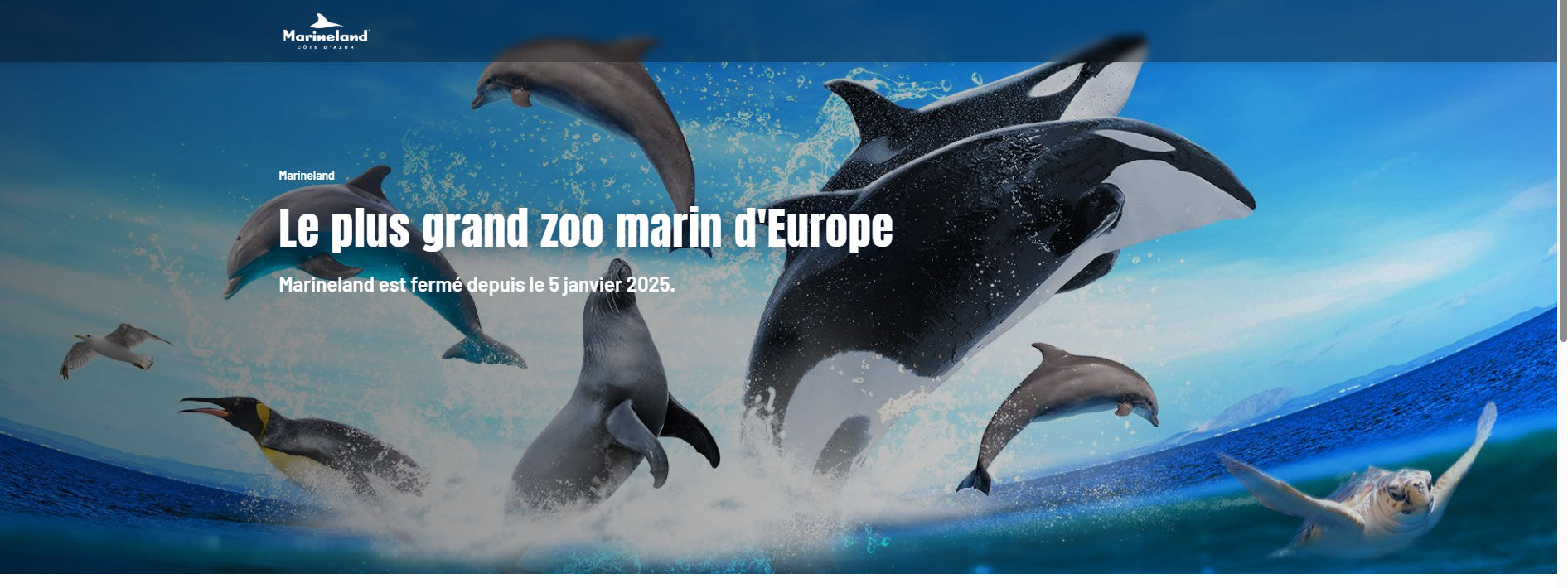What will happen to orche and dolphins of Marineland?

After the closure of the Antibes park, a consequence of a law that will prohibit aquatic shows throughout France, it is feared for the fate of animals: they cannot be transferred to other zoo but there are no sanctuaries to welcome them
What happened to the Two orche he is 12 Tursiopi dolphins which until the end of last year performed at Marineland Of Antibeson the French Riviera? The water park, which on the homepage of its site continues to be defined as « the largest marine zoo in Europe », closed its doors on January 5. The decision was made by the management company following the Revenue shoulder strap recorded starting from the years of Covid but also for the entry into force of a law launched by the French Parliament at the end of November 2021 that prohibits the performances of the cetaceans starting from December next year. Given the negative economic trend, Marineland preferred not to wait for two more years to decide the stop to the activities.
The decision had long been known, publicly announced with a press release from 4 December. But The question now becomes particularly pressing. Until now, in fact, work contracts have been kept with the staff entrusted to the surveillance and care of animals. But the same expires in this month and therefore a decision must be urgently made.
The company proposed to transfer animals In two other structures of the group in Spain. But at the moment there is no authorization from the French authorities, because endorsing the move would mean endorsing the use of animals for entertainment or exposure purposes but in restricted and inadequate spaces, thus going against the spirit of the approved law. Once across the border, in fact, orche and dolphins would be under the Spanish jurisdiction, which has no equally restrictive rules. And the French authorities could no longer do anything for them.
The association for the protection of marine fauna expressed itself against the transfer Sea Shepherdwhich he sent to the French government, and in particular to the minister for the ecological transition Agnès Pannier-Runacheran open letter accompanied by 96 thousand signatures Asking to prevent animals from ending up again in an amusement park and that they are rather kept in a « sanctuary » where they can live the rest of their existence in semi-freedom.
Pannier-Runacher has ensured that he was already at work since February with his Italian, Spanish and Greek approval to find an ethically more acceptable solution, but in fact the times are tight. The sanctuaries evoked still do not exist. And well that things go, the first could be prepared no earlier than 2026. But the problem, due to the end of the employment contracts, is immediate. So what to do? Sea Shepherd proposed to immediately pay 5 million euros To maintain the orcies at Antibes and avoid what they consider « the transfer of shame ». The money would be used to look after the cetaceans, waiting for the sanctuaries to be made. But Marineland, who at the moment remains the legitimate owner of the ownership of the animals, has not yet expressed an availability in this regard.
But what exactly are the sanctuaries we are talking about? Nothing to do, of course, with Pelagosthe large sanctuary in the open sea that embraces a large dial between the Principality of Monacothe Liguriathe Tuscanythe Sardinia and the Corsicawhere a theoretical form of protection of the different species of whales and dolphins that inhabit it. Theoretical because in fact there are no limits to commercial and tourist circulation and collisions have been recorded several times that have been particularly serious or even lethal for animals.
The reference is rather to the « reception sanctuaries», Which are small in size that are made by circumscribing bays through networks. The animals therefore live at sea, but in a necessarily contained portion. Not an ideal situation, compared to real freedom, but always better than in a tank, like the one where they spent most of their existence. « In any case, they could not be released in nature – he underlines Sabina Airoldimarine biologist and project manager of the Scientific Association Tethyswhich since the 1980s monitors the populations of the Pelagos sanctuary -. Animals born or lived many years in captivity are unable to live free. The experiments attempted in the past have always failed ».
Imprisonment It inhibits all those behaviors that in nature would be innate or learned in pack logic. The animals of the aquatic parks, as well as the terrestrial ones of the zoo, are unable to obtain nourishment on their own, or in any case to do it adequately; I am unable to manage large open spaces; They never lived the interactions with their similar ones. In fact, they would risk living solitary lives and hardships that would gradually bring them towards the decline. Free WillyIn short, only a film remains. Also Keikothe Orca that had played it in the film that became a cult of the nineties and which was then freed on international pressure and with an investment of over 20 million dollars, in the end resisted only a few months in freedom, before dying from a pneumonia.

For this reason, the only alternative to the tanks for the animals of Marineland are the reception sanctuaries. « But even in this case we are talking about operations that are anything but easy to carry out – says Airoldi -. The areas must be identified, establish that they are reserved for recovery activities, instruct the team of people who will take care of animals, both for the supply of food and for medical and health aspects. Not to mention the cost to achieve all this. And even if the money was found, for how many years the project could be financed? Let’s talk about animals that can also come to 70 years». And the two orche are relatively young: Wikie He is 24 years old and his son Keijo Only 11. EU conservation projects also have horizons generally limited to 5 years or even less. A truly complex situation and not surprisingly the France Presse defined the question a true « puzzle » for the government.
The Marineland Park was built in 1970 On the initiative of a French industrialist, the Conte Roland de la Poypealready hunting pilot and war hero, passionate about the marine world and eager to make available to the general public a space in which to see the creatures of the seas closely. A large aquarium, but also a place used for performances. Over the years the second aspect has become prevalent. But the sensitivity of public opinion and the same film is also gradually changed Free Willy – which told of the sufferings of a orca forced to perform in an aquatic park and then escaped in the open sea with the help of a boy – he changed the narrative around this animal, which was often called « murderer » for an incorrect literal translation of his name in English (Killer Whale). The pressures of environmentalists and animalists did the rest.
In the press release that announced the closure, the managers of Parque Reunidos, the Spanish group of entertainment to which Marineland belongs together with another sixty structures in Europe and the USA, had underlined that until 2021 90% of visitors were attracted precisely by the performances of Orche and Delfini. However, over the last decade, thanks to the stops of the pandemic period and the new law on animal welfare – which, although not yet operational, has still contributed to passing the idea that those shows were something ethically wrong – Visitors went from 1.2 million per year to only 425 thousandwith a consequent drop in revenue. So the choice to close and the current unknown on the future of Orche and Delfini.








